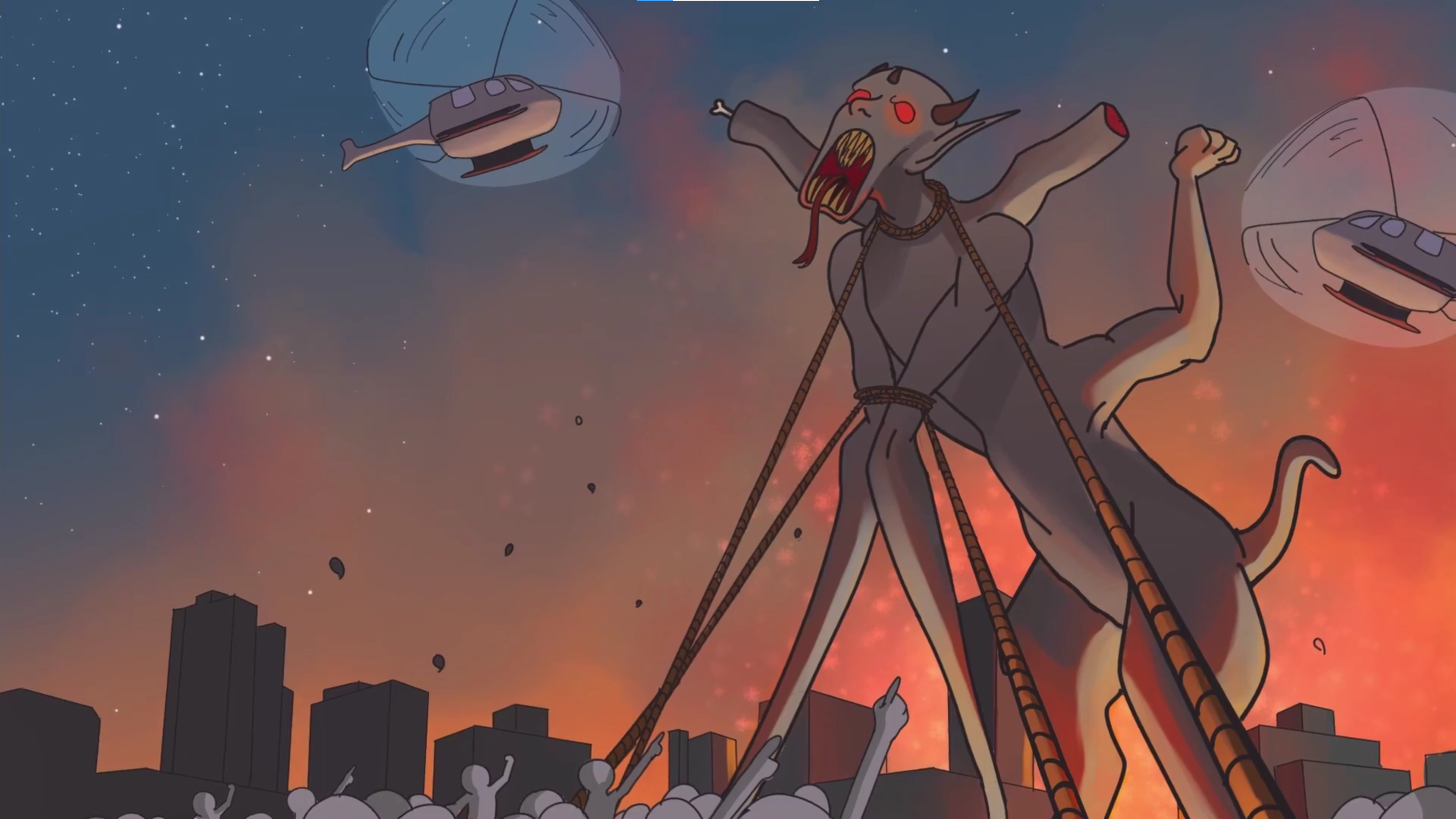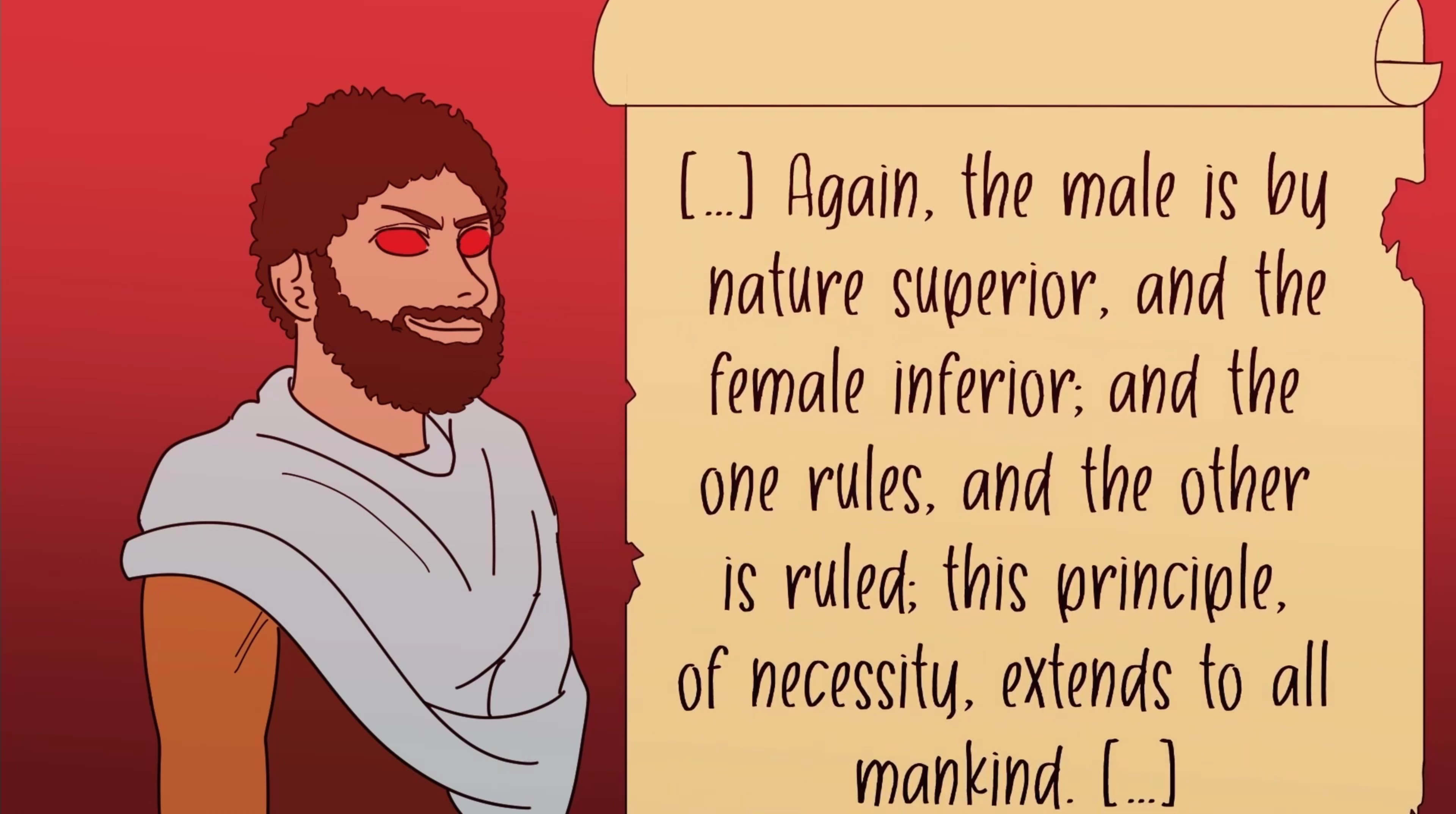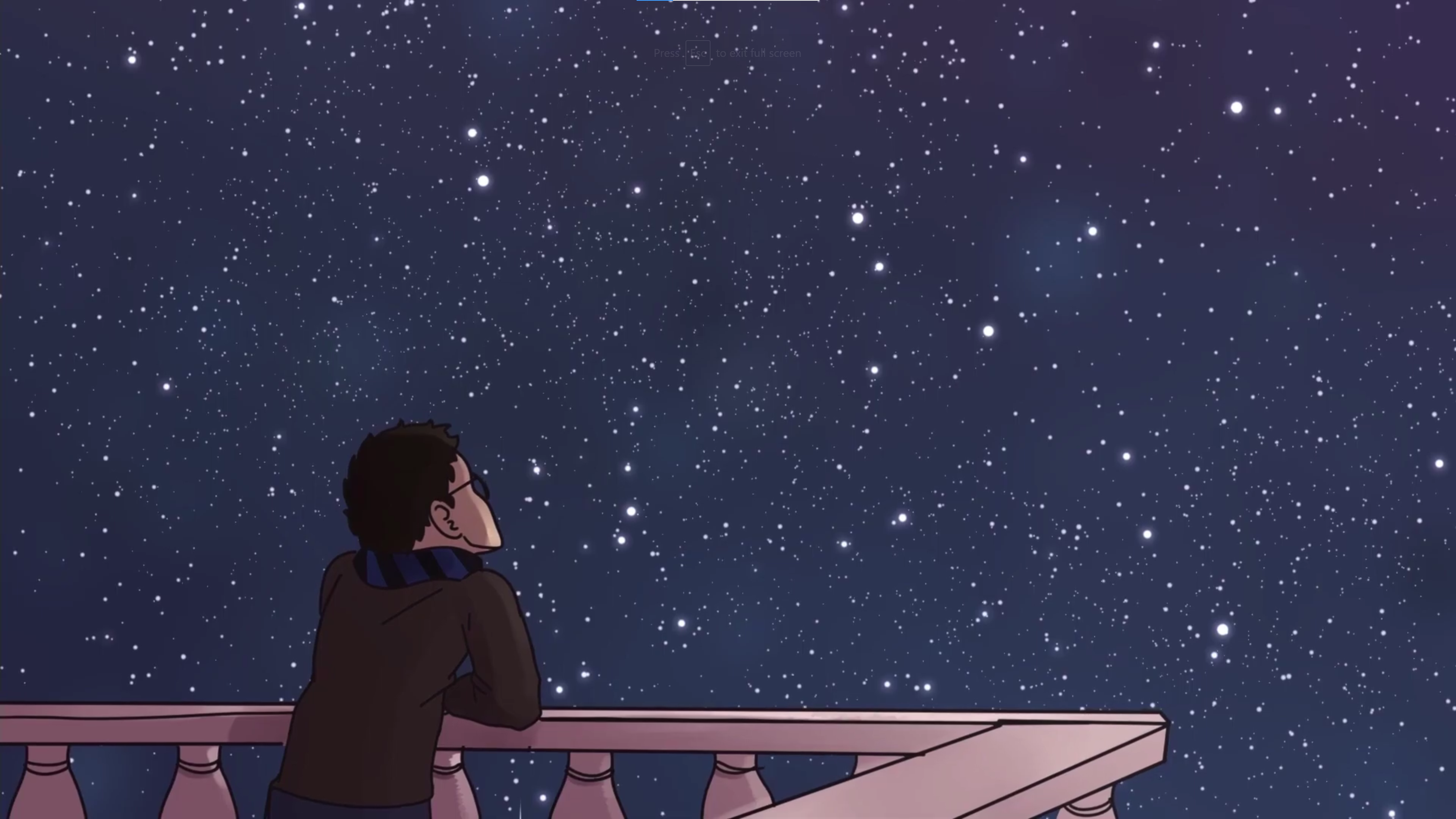This is Rational Animations’ script for the video linked above. Past feedback on the EA Forum has been helpful, so I encourage you to give your opinions in the comments. Between the video about longtermism and this one, we also published a video about Julia Galef’s book “The Scout Mindset”. Check it out on the channel if you are curious.
There are transparent monsters in the world. They are enormous, but they walk mostly unseen. You can only see them if you squint hard enough or if you recognize the distortions they produce on light. Monsters leave destruction in their wake, but not everyone can recognize the destruction as such. In any given era of humanity, only a few people know that transparent monsters exist.
The first few who recognize a monster often speak up. A few others join them, and the cause grows. The more people see the monster, the more visible it becomes.
During this process, and even after everyone can see the monster, some people will defend it. They’ll say it’s a necessary evil or actually beneficial. Maybe they’ll say that it protects us from an even bigger monster.
Most of the time, these arguments don’t last. In the end, most of humanity bands together to take the monster down. As a result, we become better and stronger.

But we only know of the victories. History doesn’t sing of those who weren’t believed. Those who died, broken and alienated. Those who are still alive, shouting without being heard. There are monsters in the world today. You might see some of them, but you don’t see all of them. Probably no one does.
Consider… slavery: it’s a monster that predates written records, and it took until the 19th century to become visible to most of the world. Some forms of slavery are still present, we have not eradicated it yet, but it is now widely recognized as a tragedy.
Philosophers in ancient Greece were preoccupied with understanding what a virtuous man should do. And yet, they believed slavery to be good, partly because of a different conception of virtue than today.
Here is what Aristotle writes in The Politics: “[...] But is there any one thus intended by nature to be a slave, and for whom such a condition is expedient and right, or rather is not all slavery a violation of nature? There is no difficulty in answering this question, on grounds both of reason and of fact. For that some should rule and others be ruled is a thing not only necessary, but expedient; from the hour of their birth, some are marked out for subjection, others for rule [...]”
Many other philosophers across the ages had similar opinions, such as Plato, Homer, St Augustine, Aquinas, and more. Slavery was also considered a positive good by most politicians and intellectuals on the southern side of the American civil war.
But more importantly, slavery has been considered a normal part of life for millennia of human history by many cultures, nationalities, and religions. That’s what made it a transparent monster.
But slavery is not the only example of a transparent monster that we are now able to recognize.
Consider how Aristotle continues that passage about slaves: “ [...] Again, the male is by nature superior, and the female inferior; and the one rules, and the other is ruled; this principle, of necessity, extends to all mankind. [...]”

History is filled with these once-invisible monsters: the subjugation of women, the slaughter of foreigners, and the persecution of people based on religion, ethnicity, or sexual orientation. It’s very easy to be oblivious to large and pervasive moral problems and even unknowingly commit tragedies of vast proportions.
So we might ask: given our past, how likely is it that we know about all of the monsters? How likely is it that all the people who shout about new monsters are wrong?
It doesn’t seem likely at all. And we have evidence against this idea: even in the last few years, certain monsters have become much more visible.
Humanity is just awakening about our treatment of animals, for example. It may be that in the not too distant future, such a tragedy will be solved by technology, with the help of lab-grown meat.
The evolution of morality through history is, in part, a process of moral circle expansion. If at first slaves weren’t considered worthy of moral consideration, now we consider all of humanity to have such rights. Future humanity might include animals as uncontroversially as we include all humans today.
Or, even more radically: in the future, we might include all creatures capable of some form of subjective experience.

This leads us to a consideration: monsters don’t necessarily have to spring from human actions. They might be tragedies hidden in the natural world that might be uncovered only through increased scientific understanding.
For example, more understanding may help us draw the line between what suffers and what doesn’t. If we include wild animals in our moral circle, we still have to grapple with questions such as: “where do we draw the line between what is conscious and what is not? What creatures are capable of suffering and to what extent?” Consider the possibility that insects might suffer. If this is true, then insects might collectively matter enormously because of the sheer number of them. It is estimated that there are 100 million to a billion insects for every human alive—making up quite a large monster if they are capable of suffering. We will confirm or falsify its existence only through increased scientific understanding.
But other than science and moral circle expansion, in what ways can individuals hope to spot monsters? A pattern you might have noticed is that in every case I mentioned, the creatures subject to the tragedy were similar to us in key ways: Slaves are humans, and animals exhibit complex behavior. So, one way to spot a monster is by recognizing the similarities between other beings and us. Plus, some introspection is probably necessary: you might ask yourself something along the lines of “would I like to be in the place of that being?” if the question makes sense, and if the answer is “no”, you might be onto something. I don’t know if this reasoning would help, but we might as well try.
Another trick that you could use is this: Ask yourself what a more enlightened humanity would think. For example, suppose you spotted the trend of moral circle expansion and extrapolated it into the future. In that case, you might guess what the morality of future humans will look like, and potentially you might want to adopt it.

There are many more considerations that you could make and many different ways to search for monsters. For now, remember to watch out for them. Suffering might be hidden, and your moral assumptions might change upon more reflection. Common moral intuitions might be wrong, and sometimes they are fake. Similarities between living beings and using a more enlightened humanity as a guide might help you. The next video will cover another approach to finding monsters. It will be completely different. If you are curious, stay tuned.
Trying to extend the metaphor: in order to see monsters you have to look through the Overton Window. But first you have to shift the window and reach the monster; otherwise it will remain invisible.
However, I would remark that the Overton Window does not necessarily always shift towards a better world. Sometimes there aren’t any monsters around, and you end up summoning one.
For example, push too much towards Killing Animals Is Really Bad, and you might get Killing Animals Is Worse Than Killing Humans. Maybe I’m not enlightened enough, but I doubt that an enlightened human would value the life of a dog more than the life of another human… yet this position seems to be actually hold by a disturbingly large number of people (10-seconds Google search, not double-checked: 14% of 537 people would save one random dog over a foreign tourist… raise to 40% when asked to choose between their dog and a stranger).
Google “A Rat Is a Pig Is a Dog Is a Boy”. It’s a PETA slogan coined by its founder. Enlightened or not, there are people who believe this.
Of course there are people who believe this! Actually, PETA-like morality seems to be increasingly common (I highly doubt that 14% of people would have saved random dogs over humans in 1901). My point was that an increment in PETA-like morality is not necessarily a good thing that will bring us all closer to the next stage of humanity.
Suppose that Future Buddha declares that there is absolutely no moral difference between me and one random dog, and he’ll happily flip a coin to decide which one deserves to live. I’ve thought about it for several hours, but I still lean towards “Future Buddha is an idiot”.
If you meet Buddha on the road...
While I don’t know any people who would explicitly say e.g. that politically incorrect speech is worse than literal slavery… if you look at revealed preferences, people spend a lot of energy fighting politically incorrect speech, and mostly ignore the fact that slavery still exists in many parts of the world.
Of course, outgroup vs fargroup, etc.
Answering both of you: I agree that the topic is not as simple as it may seem. We may not like some things about future morality. I also think that if you hear large portions of the population screaming about something, then you’re probably not dealing with a transparent monster, or even necessarily something very important.
Transparent monsters at some point may become visible, and people will be loud about them. But the overwhelming majority of situations in which people are loud about something are not about transparent monsters.
Monsters usually refer to the concept of threats to survival. Before we could form societies and wall off our dwellings, we had to live among other wild life and other tribes that might threaten our ability to survive. Nowadays these threats are much more abstract and elusive. It’s really the changing temporal context that makes things much more nuanced on a case by case basis. Monsters such as slavery is a threat to the survival of a subgroup just like politically incorrect speech only threaten a subgroup as well. Humanity is much more stratified now than back when we lived in caves. Modern civilization is still much a transparent monster to the survival and preservation of lifestyles of indigenous tribes all over the world. They’ve achieved certain ecological equilibrium with nature for awhile now but have to worry about the invasiveness of the modern man.